
drag badge here
drag badge here
gamerdad
gamer level 6
11454 xp
11454 xp
followers
18
18
Use my invite URL to register (this will give me kudos)
https://boardgaming.com/register/?invited_by=gamerdad
profile badges




recent achievements

Novice Advisor
Submit 10 game tips, strategies, or house rules and receive a total of 270 positive ratings.
Submit 10 game tips, strategies, or house rules and receive a total of 270 positive ratings.

Junior
Earn Professor XP to level up by completing Professor Quests!
Earn Professor XP to level up by completing Professor Quests!

Inspector
Follow a total of 30 games
Follow a total of 30 games

Old Bones
Explore select games by completing a series of exploration actions. learn more »
Explore select games by completing a series of exploration actions. learn more »
Player Stats
Critic (lvl 2)
445 xp
445 xp
Explorer (lvl 4)
1940 xp
1940 xp
Professor (lvl 3)
849 xp
849 xp
Reporter (lvl 2)
466 xp
466 xp
About Me
I'm a husband to a beautiful wife (she buys me games for Christmas!) and a father to a beautiful daughter, a backpacker, a reader of fantasy, a youth pastor by day, and a gamer by night...and also sometimes by day. I love games, and the way they bring people together and forge friendships and memories. There are two ways I'd love to spend my afternoon - either out in the mountains on a hammock reading, or at the kitchen table or on the patio playing games with my friends and family.
And since we're all here for the games, my three favorite games right now are Crokinole and 7 Wonders. I love deck building and card based games. I dabble in Magic, but have yet to take the financial plunge, as I would rather buy other games. Recently I've been getting into tabletop RPG's too.




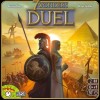


















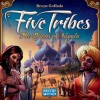





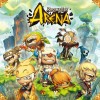
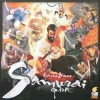


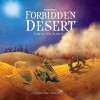








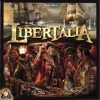






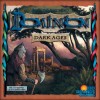
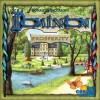




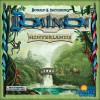
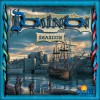















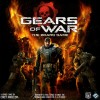
7 Wonders
For me, this game is wondrous. I can’t stop playing it, nor can my wife – my mom even loves it! This game has a really intriguing balance of simplicity and strategic depth. It’s a game where people can sit around the table and talk and have fun, yet it can also be very deep and calculated. For these reasons, I think this is a game that could be enjoyed by gamers of all types.
7 Wonders is a game for 2-7 players, although it is best for 3-7. The two player variant isn’t much fun in my opinion. Anyway, each player receives a wonder to play, which is represented on its respective wonder board. (If you want to randomize it, there are wonder cards which can be passed out.) Each player starts out with 3 coins and a resource that their city produces.
The object of the game is to score the most victory points, and there are many ways to do that. There are three stages to this game – Age I, II, and III. Each age gets progressively more complex, but not more difficult. At the start of each age, each player is dealt 7 cards (more on what the cards do in a minute). The player must determine what will benefit him/her the most, but choose wisely! Once everyone selects a card to play, the cards you had in your hand will now get passed to your neighbor, and you will receive a new set of cards (now 6 cards, because everyone passes). After each age, resolve military conflicts (explained soon) and pass out cards for the next age. Like I said before, they get more complex as you progress because, theoretically, you will have more resources to build things, and building things gives you points.
Now, a short description of the various cards. There are 6 different types of cards, and they are conveniently color coordinated – Resource cards (brown or gray), Military cards (red), Civilian cards (blue), Commerce cards (yellow), Science cards (green) and Guild cards (purple).
To quickly explain, resource cards are needed to build things. On many cards there is a cost which is represented by different icons on the top-left side of each card. You must have those resources to play the card. If you don’t, you can always purchase them from your neighbors sitting directly beside you for two coins per resource. So, you’ll need resources.
Commerce cards help you get resources from your neighbors for less money, or provide you resources no one else can purchase. On some occasions, they can also give you money and victory points.
Military cards put you at odds with your neighbors. At the end of each age, count up your military icons, and determine who wins. You get points for winning (1,3,5 points for Age 1,2,3 respectively). You get -1 point for each military loss. So, if you beat your neighbors every age, you could rack up 18 victory points while giving each neighbor -3 victory points.
Civilian cards are just straight victory points. The highest scoring card in the game is a civilian card, worth 8 points, and it costs one of every resource.
Science cards, in my opinion, are the trickiest piece of the game, but when played correctly, they can really boost your score. Each science card will have one of three icons on it – a compass, a tablet, or a wheel. You get points for getting a set of each icon – 7 points per set. In addition to that, you also get the number of a particular icon squared. Sounds tricky, right? Don’t worry, it’s hard to visualize, but the rulebook does a good job of explaining. Say you have 3 cards that have the compass icon. That would give you 9 points, since 3 squared is 9. Ok, I’ll move on so your brain doesn’t explode…just rest assured that you’ll get it quickly.
Guild cards are only available in the third age, and they often cost a good amount of resources, but yield a good amount of points, depending on what you and your neighbors have constructed over the course of the game. They can be the difference between winning and losing.
I didn’t mention earlier, but you also get points for building your wonder. To build a stage of your wonder, simply take a card from your hand and place it under the stage of your wonder board. That is the card you play for your turn, and you cannot play another card that turn. Each city gives a unique ability that will benefit the person using it. What if you can’t play a card in your hand, or what if you need money? Pick a card in your hand and discard from the game for that turn. Discarding a card gives you 3 coins. At the end of the third age, the game is over. Resolve your final military conflicts and total up all of the points you scored, and whoever has the highest score wins.
Enough about what the game is like and how it’s played. Now I get to talk about why I love it. This game is quick and simple. It takes the same amount of time for 2 people as it does for 7 people, because it’s always your turn – everyone plays at the same time. That makes it really easy to play in 30 minutes as long as everyone knows how to play. The artwork is fantastic and beautiful to look at, although when playing, you don’t really think to admire it. The wonder boards are equally spectacular. The components are well made, however I recommend getting sleeves for your cards, because they may start to get worn out edges from being shuffled and passed all the time.
Another strong positive about this game is its replay value. While you will see the same cards each time you play, the game will play out differently because of the way they’re randomized through shuffling and dealing, your wonder, and the wonders of your opponents. I love that you have to play with a new strategy every time. After a while, you will see a few strategies that work for you, and you can adjust and interchange them as you play.
Like I said before, the game is simple – the cards are pretty intuitive and it doesn’t take a whole lot to see what you are able to play and pick a card. For that reason, this is a fun game to play with people and build a civilization. But, you can also really break this game down and consider what to play from many different angles. What will help me the most? What would hurt my neighbors? Should I keep them from getting anything? What is most beneficial to me in the long run? All of these questions make for some fun decision making and risk taking. Look up a statistical analysis of this game, and it will show you how deep and complex it can be. Truly amazing.
Now for some drawbacks to this game. The game is called 7 wonders, but it doesn’t really have the feel of building a powerful ancient civilization. You could keep these same basic concepts and make any theme you want – sci fi, fantasy, you name it – and the game would feel the same. But a weak theme does not take away from the gameplay.
Also, if someone isn’t accustomed to playing games, there may be some confusion. I said earlier that this game is intuitive, and that is assuming that you’ve played games. All of the icons on the cards can be overwhelming. The best way to learn the game is to play it, and to have someone who knows the game well to sit beside you and walk you through it. After the first game I played, I got slaughtered, but I understood why I lost and immediately wanted to play again – and I got much better results.
The rulebook is ok. There is a lot going on, but for the most part, it does a good job of explaining the game. The quick rules sheets that come along with the game are the most helpful to me.
Based on all I’ve written so far, I hope you get a sense of how fun and intriguing and addictive this game is. I recommend that everyone at least try it as I think just about everyone can find something they’d like about it. I haven’t even been tempted to get the expansions to this game because I haven’t tired of this one yet. If you’re still reading, go pick this one up! You’ll love it.
Finally, I want to end this review by thanking my wife for getting this for me as a gift. You know me too well, and I’m glad you enjoy it almost as much as I do!